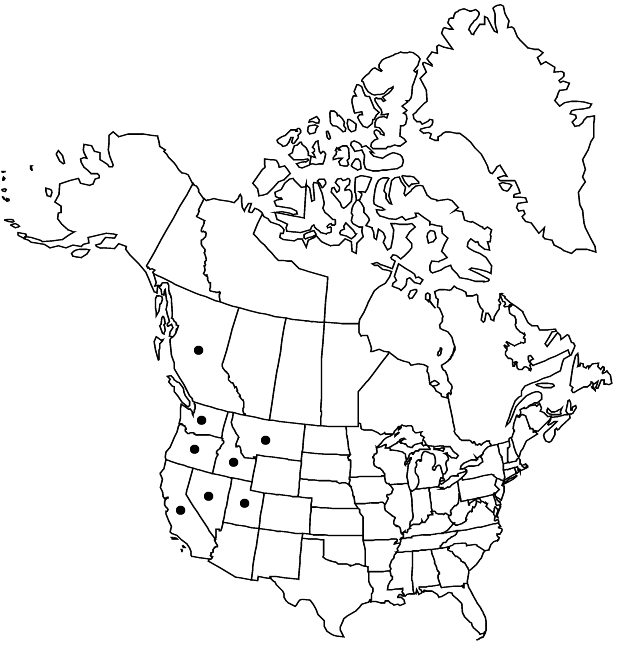Difference between revisions of "Chimaphila menziesii"
Syst. Veg. 2: 317. 1825 ,.
FNA>Volume Importer |
imported>Volume Importer |
||
| (6 intermediate revisions by 2 users not shown) | |||
| Line 7: | Line 7: | ||
}} | }} | ||
|common_names=Little prince’s-plume;Menzies’ wintergreen | |common_names=Little prince’s-plume;Menzies’ wintergreen | ||
| − | |basionyms={{Treatment/ID/ | + | |special_status={{Treatment/ID/Special_status |
| + | |code=E | ||
| + | |label=Endemic | ||
| + | }} | ||
| + | |basionyms={{Treatment/ID/Basionym | ||
|name=Pyrola menziesii | |name=Pyrola menziesii | ||
|authority=R. Brown | |authority=R. Brown | ||
| + | |rank=species | ||
| + | |publication_title=Mem. Wern. Nat. Hist. Soc. | ||
| + | |publication_place=5: 245. 1824 | ||
}} | }} | ||
|synonyms= | |synonyms= | ||
| Line 34: | Line 41: | ||
-->{{#Taxon: | -->{{#Taxon: | ||
name=Chimaphila menziesii | name=Chimaphila menziesii | ||
| − | |||
|authority=(R. Brown) Sprengel | |authority=(R. Brown) Sprengel | ||
|rank=species | |rank=species | ||
| Line 48: | Line 54: | ||
|publication title=Syst. Veg. | |publication title=Syst. Veg. | ||
|publication year= | |publication year= | ||
| − | |special status= | + | |special status=Endemic |
| − | |source xml=https:// | + | |source xml=https://bitbucket.org/aafc-mbb/fna-data-curation/src/2e0870ddd59836b60bcf96646a41e87ea5a5943a/coarse_grained_fna_xml/V8/V8_729.xml |
|subfamily=Ericaceae subfam. Monotropoideae | |subfamily=Ericaceae subfam. Monotropoideae | ||
|genus=Chimaphila | |genus=Chimaphila | ||
Latest revision as of 22:45, 5 November 2020
Plants rhizomatous, 0.5–2 dm. Leaves: petiole 5–8 mm, channeled adaxially, glabrous or papillose; blade not maculate or, sometimes, maculate, dull and light green abaxially, glossy and green adaxially, lanceolate or elliptic-lanceolate to ovate or lanceolate-oblong, (6–)10–55 × 4.5–25 mm, base obtuse or acute or decurrent, margins entire or serrulate to serrate, apex acute. Inflorescences 1–3-flowered; peduncle 1 per stem, 2–5 cm, papillose to hispidulous; inflorescence bracts broadly ovate to broadly obovate, free portions shorter than to nearly as long as pedicels from which they arise, 2–7 × 2–7.5 mm, membranous, margins erose-denticulate. Pedicels 6–12 mm. Flowers: calyx lobes spreading or reflexed in fruit, green with margins hyaline or whitish green, ovate to suborbiculate, (3–)5–6.5 × 2.2–4.5 mm, margins erose-denticulate, apex rounded to obtuse; petals white, often suffused with pink, orbiculate, 5–7 × 4.5–8 mm, margins entire or erose-denticulate; stamens 4.2–7 mm; filament base 0.8–1.3 mm wide, dilated basal portion ciliate to villous; anthers 2.2–3.1 mm, thecae yellowish or tan to pinkish, tubules tan or pinkish, 0.7–1.1 mm, abruptly narrowed from thecae, lateral walls not touching, pores 0.1–0.2 × 0.1–0.2 mm; ovary papillose in lines; style 0.3–0.6 mm; stigma 1.6–2.2(–2.8) mm wide. Capsules depressed-globose, 4–5 × 5–6 mm. 2n = 26.
Phenology: Flowering (May-)Jun–Aug.
Habitat: Montane and subalpine, coniferous forests
Elevation: 10-2400 m
Distribution

B.C., Calif., Idaho, Mont., Nev., Oreg., Utah, Wash.
Discussion
Selected References
None.